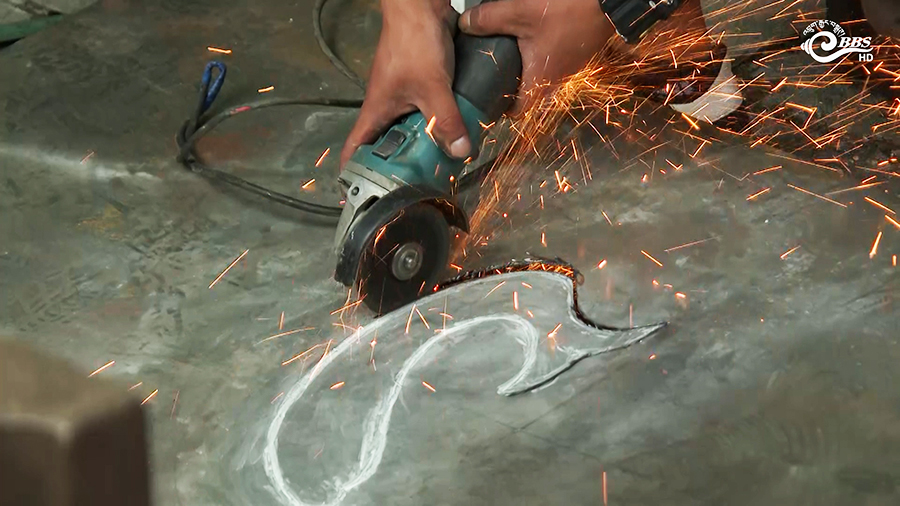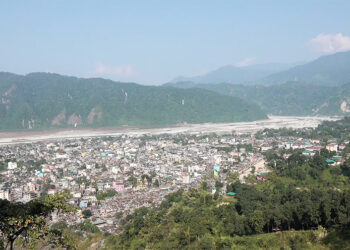 With chisels, brushes, bricks, and even mobile apps, Bhutan’s youth stepped forward to show the country and, perhaps soon, the world what they are capable of. For three days, the Second National Skills Competition tested creativity, technical proficiency and time management of the participants in various trades. Coinciding with the National Zorig Day, 21 participants, the best in their fields, were selected and awarded cash prizes.
With chisels, brushes, bricks, and even mobile apps, Bhutan’s youth stepped forward to show the country and, perhaps soon, the world what they are capable of. For three days, the Second National Skills Competition tested creativity, technical proficiency and time management of the participants in various trades. Coinciding with the National Zorig Day, 21 participants, the best in their fields, were selected and awarded cash prizes.
Last week, the clock tower in the capital buzzed with activity as skilled artisans and app developers worked on their creations,
Young men and women, representing technical institutes, vocational training centres, and private firms, competed in painting, sculpture, wood carving, metal art fabrication, mobile app development, plumbing and brick laying.
Each participant had seven hours per day over three days to complete an elaborate product assigned by the National Skills Competition’s committee. They worked live, in front of audiences and experts.
Eight painters created thangkas of Tara. 24-year-old Threchu Dorji thangka stood out. Experts say his was the most radiant, detailed and proportionate.
Karma Tshewang finished second.
Karma Tshewang said, “This year, I participated for the first time. I was worried whether I would finish it within three days, but things turned out the way I imagined.”
In Mobile App Development, code and creativity came together to build ‘TVET Connect’, an app that gamifies occupational health and safety training.
Karma Thapkhey won the category, followed by Neraj Bhatta Rai.
Meanwhile, sculptors shaped statues of the Buddha using clay and faith. Tashi Wangdi’s Buddha, though only partially complete, impressed judges with its facial features, proportions, and quality, earning him first place.
Tashi Wangdi said, “As making a statue requires a lot of process, it was difficult for me. Had there been some more time, I would have been able to make a better one.”
Woodcarvers spent hours chiselling a Druk Dhongchen (Dragon Face) each. Among them was Jigme Kezang from Monggar, whose childhood fascination with carving became his livelihood. He won the competition.
Jigme Kezang said, “Through this competition, I learned that time and patience with quality are necessary. We should take this into consideration if we are to participate more.”
In the Metal Art Fabrication section, sparks flew as contestants fabricated golden fish, judged for their intricate proportions and fine finishing.
Dewas Limbu, a graduate of Jigme Wangchuck Power Training Institute in Sarpang, came out on top.
The Plumbing category tested competitors on their ability to construct and connect working piping systems with accuracy, neatness, and technical soundness.
Young plumbers competed in aligning pipes, sealing joints, and ensuring water systems that would work in real homes. Karma Wangchuk won the category.
Karma Wangchuk said, “I was very interested in plumbing from a very young age. After training for three years, I got a job but never participated in such a competition. I am very happy after winning this category. It further motivated me to work more.”
The most stirring story came from the Brick Laying category, where 24-year-old Tshering Peldon from Samdrup Jongkhar bested seven male competitors to claim first prize.
Tshering Peldon said, “I grew up thinking that masonry work is for men. However, I took part in it after hearing that it has more scope. It’s about whether we take the opportunity or not.”
From traditional artisanship to digital innovation, from chisel to code, this competition wasn’t just about winning titles.
It was about reclaiming pride in one’s craft, pushing limits, and asserting that the country’s skilled workforce is in safe, creative, and determined hands.
Namgay Dema
Edited by Sangay Chezom








